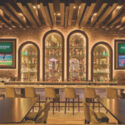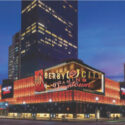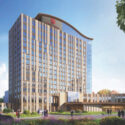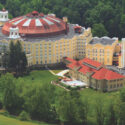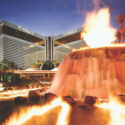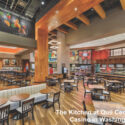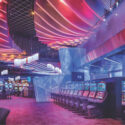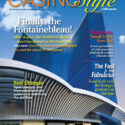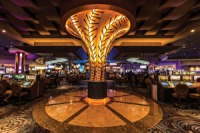
The Seneca Buffalo Creek Casino in Buffalo, New York completed its final phase in August, a keystone in revitalizing Buffalo’s Inner Harbor area. Reviving this underused industrial property was a special interest for the Seneca Nation, which has historical ties to this land.
Paul Bell, project manager, and Nathan Peak, lead designer for Hnedak Bobo Group, say a critical design factor is that the casino is two blocks from Niagara Center, home of the NHL’s Buffalo Sabres.
“We did master-plan studies with how it would work with that planned downtown district area,” Bell says. “Rather than enclosing it as an island, we wanted many access points to other businesses. Plugging into what was already there and what was already happening was pretty exciting.” They oriented the casino’s size, gaming, food and beverage to attract from the surrounding community and fuel Inner Harbor’s redevelopment.
The Seneca Nation wanted to create a world-class gaming destination to capture Buffalo’s regional gaming market. But that was only part of it.
“The corner of the building we dedicated to a park, where there is a small hill,” says Bell. “We carved through the middle of that hill, and set aside a quarter of the site to a park. We wanted to make the core large enough to accommodate art festivals and other multi-faceted events. There was a lot of commitment from the Seneca Nation to invest in a public-space area.”
“That created design challenges,” adds Peak. “We had a fixed site, and one block of downtown parking was not sufficient, so we had to have a parking garage (four levels with 725 spaces). We balanced that with the open space. It added a lot of breadth and decompression.”
The 64,000-square-foot, $130 million Buffalo Creek Casino has 808 slots, 18 table games, a high-limit slots area, the 24-seat BC Café, the 120-seat Buffalo Savors restaurant and the 50-seat Stixx Sports Bar, set in the center of the casino floor. A hockey theme dominates with a 360-degree sculpture of Baltic Birch plywood sticks representing abstract hockey sticks. Mirrors behind the bar are backlit to suggest ice. A lacrosse netting pattern is woven into the carpeting.
The project originated in 2008 on a much larger scale with an existing steel frame. “We designed the building reusing 90 percent of that steel,” says Bell. “That was a huge savings to the owner and a sustainable design approach. That should be of interest to anyone who has a similar situation.”
Working closely with the tribe, the team abstracted tribal elements and integrated them into the design. “We abstracted a single feather into a pylon,” says Peak. “The interstate is elevated, so passing motorists look down on the casino. That was a very important design element. The pylon is illuminated 70 feet tall from the base.”
Smaller pylons, one for each of the nation’s clans, light the Seneca Walk leading to the entrance. The casino’s interior design represents cultural elements, with a “Tree of Peace” drawing the eye to the center of the gaming floor.
Owner: The Seneca Nation
Architect: Hnedak Bobo Group
Contractor: Seneca Construction Management Corporation
Investment: $130 million



